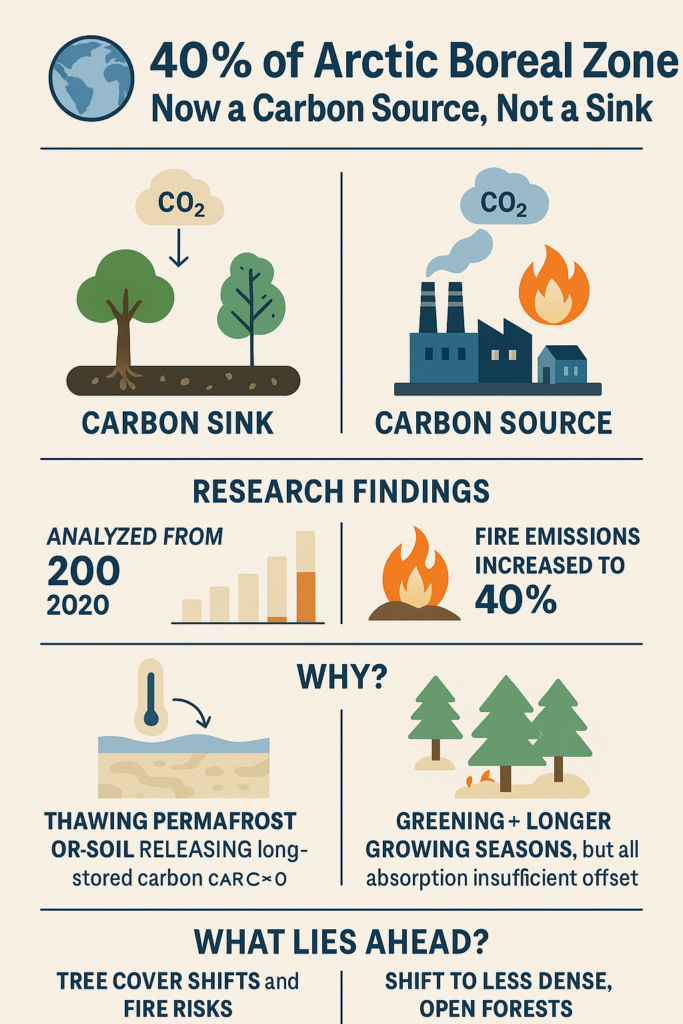149.
🌍 Arctic Alarm Bells: Nature’s Carbon Bank Is in Decline


40% of Arctic Boreal Zone Now a Carbon Source, Not a Sink
Recent scientific findings have revealed a climate tipping point in the Arctic Boreal Zone—nearly 40% of this crucial region has shifted from absorbing carbon to emitting it. This stark transformation is being driven by rising temperatures, longer growing seasons, permafrost thaw, and a spike in wildfires.
🌀 Carbon Sink vs. Carbon Source: What’s the Difference?
- A carbon sink absorbs more CO₂ than it releases—helping cool the planet.
- A carbon source emits more CO₂ than it stores—intensifying global warming.
➡️ Once a powerful carbon sink, the Arctic is now contributing to global emissions, exacerbating the climate crisis.
🔬 Key Research Insights
- Published in Nature Climate Change
- Based on data from 200 monitoring sites (1990–2020)
- 🔥 Fire emissions pushed carbon-source regions up to 40%
- Net carbon release is highest outside summer months, cancelling summer gains
🗺️ Where Are the Hotspots?
- Alaska: 44% of monitored areas now emit carbon
- Northern Europe: 25%
- Canada: 19%
- Siberia: 13%
These emissions are not just seasonal—they’re becoming year-round.
🌡️ Why Is This Happening?
- Warming air and soil temperatures melt permafrost, releasing ancient carbon
- Microbial activity accelerates in warmer, wetter soils
- “Greening” has led to longer growing seasons, but not enough absorption to counterbalance emissions
🌲 Boreal Forests Under Threat
- Boreal forests (Canada, Alaska, Siberia) are warming 4x faster than the global average
- Vulnerability to wildfires is growing rapidly
- Only 12% of the Arctic Boreal Zone remains a net carbon sink annually
🌳 Tree Cover Shifts and Fire Risk
- Wageningen University data (2000–2020) shows:
- Declines in high-density tree cover in warmer areas
- Increases in low-density cover in colder zones
- By 2100: forests may stabilise at intermediate densities, raising flammability and complicating climate predictions
🔥 Fire-Driven Feedback Loop
More open forests → higher fire risk → more emissions → further warming.
This feedback loop threatens the Arctic’s ability to regulate Earth’s climate and protect biodiversity.
🧭 What Lies Ahead?
- The Arctic’s changing role from carbon buffer to emitter demands urgent global mitigation efforts
- Protecting permafrost and reducing wildfire risk could be key to climate stabilisation
🌎 The boreal biome once helped cool the Earth. Today, it sends us a fiery warning.















